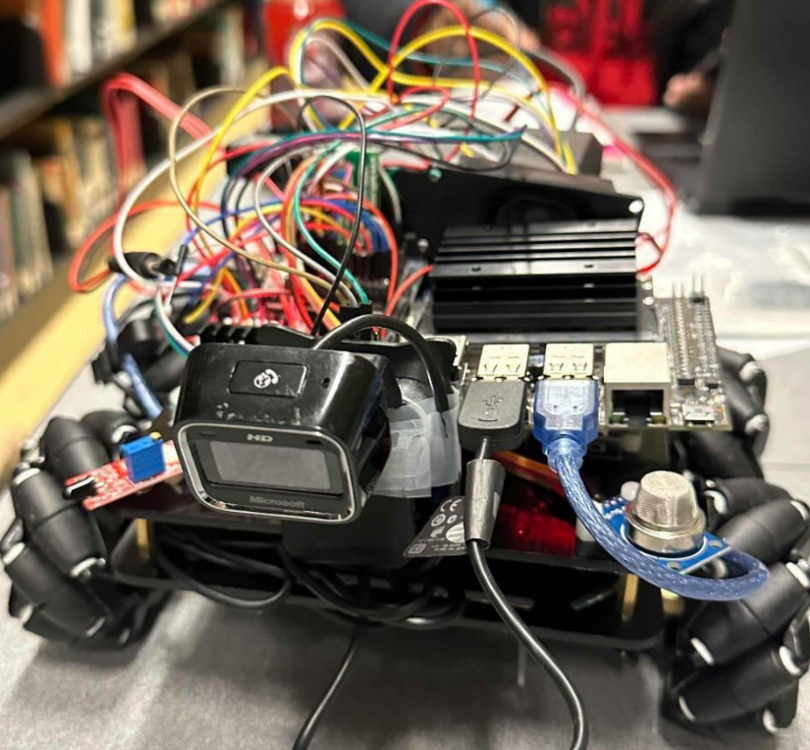There are 43 million humans living with blindness, and approximately 295 million others living with moderate to severe visual impairments. This means that out of the entire human population around 0.5% are blind and 4% are visually impaired. Visually impaired people have a hard time detecting obstacles and hazards on the moving path or obtaining necessary information in the surroundings, making them struggle with a plethora of problems in their daily lives, especially when moving around. This paper analyzes our approach to solving these problems by creating an affordable Autonomous Robot Service Dog that replaces and enhances the functionality of a normal service dog which can cost anywhere from $15,000 to $30,000.
In the implementation of Max the robot, three embedded boards were utilized and cooperated together to make up all the necessary functionalities of our Service Robot Dog. An Arduino board was used to control the movements of the robot as well as taking in necessary sensor data from the surrounding. A Raspberry Pi with text-to-speech and speech-to-text algorithms was used to allow communication between users and the robot in understandable human language, letting users to easily give commands and receive information back and forth with the robot. The Jetson Nano board was used to analyze the surrounding environment using computer vision, allowing the robot to avoid obstacles along the way, know which path to take to guide the user to the desired destination, and obtain other necessary information to relay to the users.
The goal of this project is to inform and demonstrate the process and result behind creating an Autonomous Robot service dog. Although Max will not have much sentimental value, it will have features that far surpass that of an actual service dog and make things much easier for users at a more affordable price.

 Remote-Controlled Rescue Robot
Remote-Controlled Rescue Robot
 Modular IoT Agricultural Data Collection System
Modular IoT Agricultural Data Collection System











